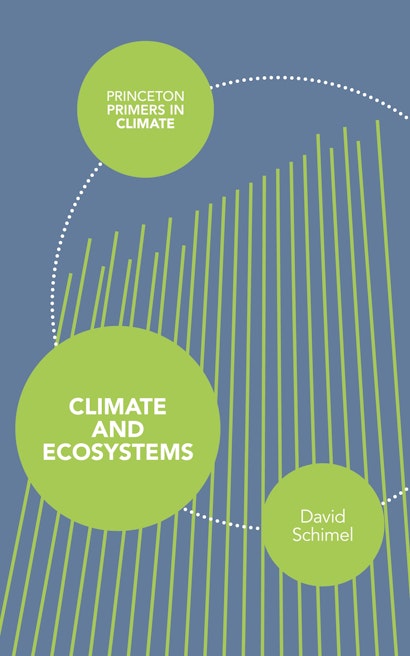How does life on our planet respond to—and shape—climate? This question has never been more urgent than it is today, when humans are faced with the daunting task of guiding adaptation to an inexorably changing climate. This concise, accessible, and authoritative book provides an unmatched introduction to the most reliable current knowledge about the complex relationship between living things and climate.
Using an Earth System framework, David Schimel describes how organisms, communities of organisms, and the planetary biosphere itself react to and influence environmental change. While much about the biosphere and its interactions with the rest of the Earth System remains a mystery, this book explains what is known about how physical and chemical climate affect organisms, how those physical changes influence how organisms function as individuals and in communities of organisms, and ultimately how climate-triggered ecosystem changes feed back to the physical and chemical parts of the Earth System.
An essential introduction, Climate and Ecosystems shows how Earth’s living systems profoundly shape the physical world.
David Schimel is a senior research scientist at the Jet Propulsion Laboratory in Pasadena, California. Previously, he was CEO of the National Ecological Observatory Network (NEON), a senior scientist at the National Center for Atmospheric Research, and founding codirector of the Max Planck Institute for Biogeochemistry. In 2007, he was a corecipient of the Nobel Peace Prize for his work on the Intergovernmental Panel on Climate Change's first report on the global carbon cycle.
"Schimel has been studying the climate-ecosystem interface for more than 30 years, and the book's level of authority reflects his expertise. Nonetheless, it is quite personable in tone and highly accessible to undergraduate students. It seems to cover the territory quite thoroughly, beginning with a very brief introduction to climate generally."—Choice
"The author does an admirable job of presenting a highly complex field of study in an extraordinarily accessible manner. . . . [It] will find immediate application in my own undergraduate course on climate change ecology. . . . It should be accessible to upper-level undergraduate students, and most certainly will be to beginning graduate students. As I write this, I am already mentally revising the syllabus for my senior-level course to incorporate much of the material from this book, and I intend to recommend it wholeheartedly to colleagues."—Eric Post, Quarterly Review of Biology
"This accessible primer addresses important but neglected questions: How do climate variations shape life on land and in the sea? And how in turn does life influence climate? Bridging traditional disciplines, this book will make a good addition to undergraduate and introductory graduate courses in environmental and Earth System science."—Scott Doney, Woods Hole Oceanographic Institution
"The role of the biosphere in the Earth Climate System is of course a big topic. Rather than addressing it with a sea of equations, graphs, and references, Schimel gives an insightful description of the system's controls, connections, interactions, and feedbacks. Reading this book is like sitting around a campfire with your favorite mentor rather than sitting in a lecture hall."—Steven W. Running, University of Montana and Numerical Terradynamic Simulation Group
"Predicting how land and ocean ecosystems will respond to and influence future climate change is incredibly difficult. This timely book explains why in ways that acknowledge complexity while remaining accessible to the nonspecialist. Because it juxtaposes climate-ecosystem interactions in the ocean and on land, the book has something to teach everyone."—Susan Trumbore, Max-Planck Institute for Biogeochemistry
"This compelling book provides an excellent summary of the interactions between ecosystems and climate. Schimel writes in an interesting way and has a great perspective and a broad base of knowledge to share. And he does a particular service by emphasizing that living organisms shape their geochemical environment."—Richard Houghton, Woods Hole Research Center

